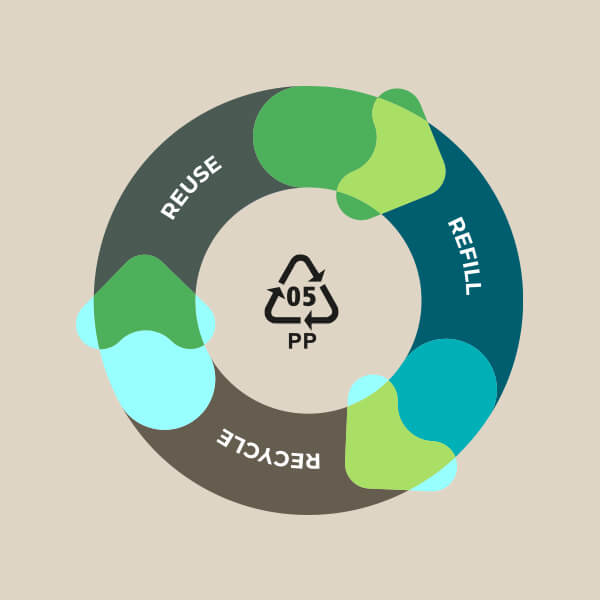Plan it, don't rush it. How taking time can result in good and sustainable research.


Author:
Dr. Valeria Scagliotti
Sustainability Consultant for Life Sciences at SustainLABility
Key topics: Sustainability, Environmental Footprint, Climate Change, IPCC Report, Greener Future
Category: Sustainability
Date: 10/10/2022
Scientific research is an exciting task.
When discussing sustainability in research, the first topics that come into mind are generally plastic waste, energy consumption, and water usage. Although these are all critical issues, there are other very important aspects to be considered, especially in relation to the way research is conducted.
Scientific research is definitely an exciting and fascinating job. Yet, the research environment can be extremely competitive, the pressure to produce results and publications very high, and the time often limited. As stated in this Nature article from 2020, “it’s more than clear that our current research practice is not sustainable”. That doesn’t sound good, does it? So how can this be improved?
My name is Dr. Valeria Scagliotti, I’m a former academic researcher turned into a green labs & sustainability consultant and here’re my reflections on what you can do to make your research greener.
Raise your hand if you have experienced the feeling of not having enough time to do all the experiments you have planned. Let’s face it: doing research does involve a lot of optimisation and ‘try-and-fail’ attempts. However, the competitive nature of the research environment forces scientists to produce lots of results and publications, fast. Unfortunately, this is often at the expense of research quality and integrity, and has contributed to what has been described as a reproducibility crisis’ in science (with scientists failing to reproduce other scientists’ or even their own work!).
Now, let’s picture the amount of time and resources that have been used (wasted) for those experiments, and you will see how this reproducibility crisis is at the same time a big sustainability problem.
For sure, evaluation systems and funding criteria – mostly based on publications and impact factor – as well as the pressure of delivering results and products before other competitors do, play a big role in fuelling this crisis and must be re-evaluated. But for now, let’s focus on what scientists can do about it.
I know, it might sound counter-intuitive at first. So let me explain what I mean by “slowing down”.
First, plan your experiments properly. There is a big difference between trying a new experiment that might lead to unexpected results and doing experiments without a rationale behind. So, before starting any experimental work, take all the time you need to make sure you’ve read the relevant literature. Also, check for data or materials that might be already available. You might have to wait a little before seeing your first results, but trust me, by doing so, you will most certainly save time, money, resources…and frustration.
Second, spend some time to optimise your settings. Don’t always follow a protocol blindly. Instead, use your critical thinking skills to test volumes, concentrations, timings and so on, especially for techniques that you use often. Once again, you will likely end up gaining a significant amount of time and money in the long run. And even if your workplace has plenty of resources, wasting them is always not cool.
Third, remember that even negative results are important. Over the last couple of years of the pandemic, we have learned that ‘negative is the new positive’. Now, that might not be true in science, where negative results are often overlooked and undervalued, especially by publishers (luckily, things are slowly changing). Nonetheless, negative but robust data should be given more attention, as they too can contribute to the progress and the shaping of research. Wouldn’t it be great - and far more sustainable - if scientists knew about other colleagues’ failed attempts so that they could plan their research accordingly? And again, how much time and resources would be spared? So, whenever you have a chance, share – not hide – your negative results.
Now, if you’re thinking that those are just tips that any good scientist should follow, you’re absolutely right. Indeed, just by making sure that you do good-quality research, you’re already contributing towards making science more sustainable (and certainly more useful!).
I don’t deny that changing the way research work looks like an epic task, but what research – and researchers- could gain from ‘slowing down’ in terms of environmental sustainability and personal well-being are worth the efforts.
What else can make research greener?
I’ve always been a bit wary of the concept of ‘consumer power’, as industries have generally way more resources to influence the market and the customers than the other way around. Having said that, when consumers act as a collective, they can gain a lot of leverage and drive some real change in the way companies operate. So, what can researchers do as buyers of lab products?
Once again, the concepts of ‘slowing down’, thinking critically and planning properly come in handy.
- The first question to answer is: Do you really need to buy that product? Maybe you realise that you can do your experiments without it, or that you can borrow it from your colleague next door (hello, collaborations!).
- If you do need to purchase a product, try to do it in the most sustainable way. How much do you need? If you want to try something or if you just need a tiny amount, then don’t buy large quantities that might go to waste. On the other hand, if you know that your work requires a lot of that product, consider buying it in bulk, as it’s usually cheaper and more sustainable than buying smaller amounts several times (think about all the avoided packaging material and transport emissions).
- Very important: look for greener options. More and more companies – including Starlab – are now putting sustainability at the centre of their operations and are taking several steps to make greener products. So do your research on what’s available and use your money to buy something that’s good for your needs AND for the environment (no greenwashing, please!).
And don’t forget about your ‘customer power’ and the importance of giving feedback. You might think that an email or a social media post won’t make much of a difference, but what if you’re not alone? What if many other green-minded scientists have been doing the same without you knowing it? If many customers demand for more sustainable options, companies will have to listen and adapt.
For what I can see, things have started moving in the right direction but for science to be sustainable, a lot more needs to be achieved.
However, scientists can really contribute to lower the environmental footprint of their work by re-thinking the way they do research and by being mindful of their choices when it comes to buying lab products. Even small steps can go a long way if taken by a lot of people. So, if you have ideas or if you see things that could be improved, share them!
Also, collaboration is key! The more researchers, companies, funding bodies and policymakers listen to each other and work together to find solutions, the more chances we have to succeed.
Remember that science is constantly evolving; what we need now is to make sure that this evolution has sustainability embedded into it.
Tips and more.


The Starlab Green Mission.
Discover Starlab's tips, products and services on the subject of sustainability. Get to know our Green Team. We look forward to a joint #EcolutionMovement.
Podcast: Sustainability in laboratories.
Klaus Ambos, CEO of the Starlab Group, dives deep into the topic with our guest Nikoline Borgermann aka Avasustain – a biochemist and environmentalist.






